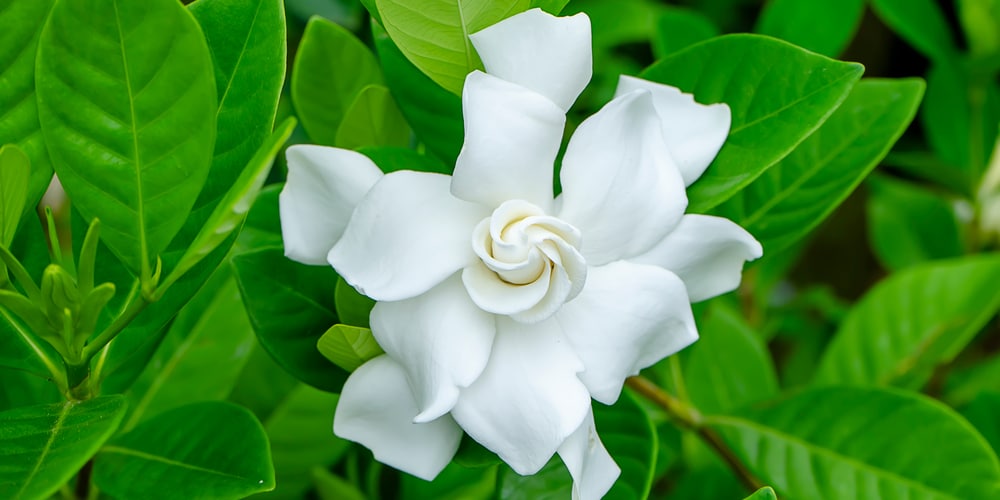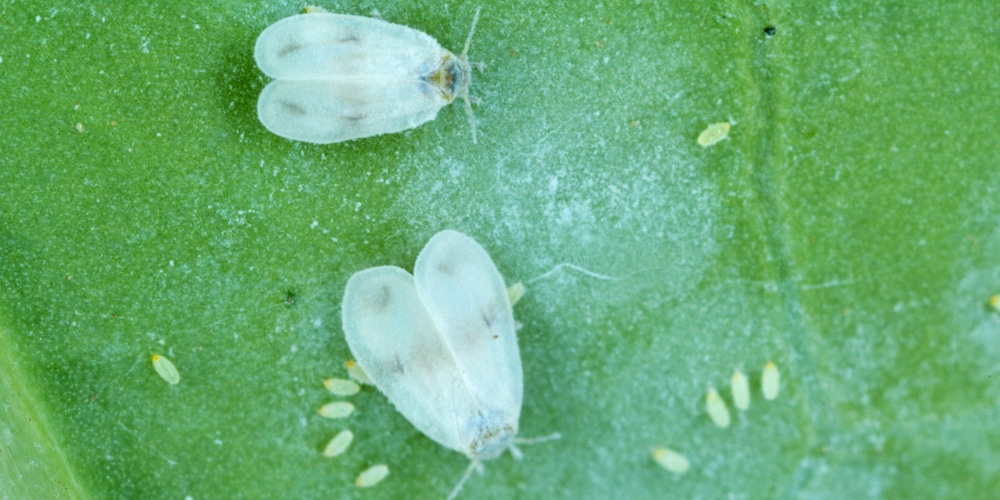Gardenias are stunning shrubs, perfect for adding an elegant and tropical touch to your outdoor (or indoor) spaces. Their flowers are showy and produce a deliciously sweet fragrance. White flies on Gardenias can be a problem, but the good news is that there are several methods to remove them.
During the flowering season, they will attract plenty of beneficial pollinators. Honestly, gardenia isn’t an easy plant to grow. However, that doesn’t mean it’s impossible. With proper care, you’ll be able to enjoy its beauty for years.
Unfortunately, this plant is susceptible to attacks from pests. One of the most common problems with gardenia is whiteflies. If that’s something you are familiar with, look no further. Here, you can find all the information you need to know to eliminate them.
Why Do Whiteflies Attack Gardenias?
Despite their name, whiteflies are not flies in the technical sense of the word. Instead, they are mealybugs and aphids‘ relatives.
These insects are tiny, and despite their harmless appearance, they can cause severe damage to your plants. Indeed, they enjoy sucking sap from the foliage, which might cause it to turn yellow or wilted.
Over time, that might result in premature death. But how can you take care of whiteflies? You can find our favorite tips in the following sections!
Don’t forget to inspect your plant at regular intervals. Taking prompt action might prevent the situation from escalating. The good news is that you won’t necessarily have to use harsh chemicals to remove whiteflies. Read on to find out why!
White Flies on Gardenias Removal tips
Manual Removal
One of the best ways to control whiteflies is to inspect your plant regularly. Look at your gardenia’s leaves (don’t forget to check the undersides!). If you notice the presence of eggs and small flies, you can remove them with your hands.
If you are not dealing with a severe infestation, you’ll probably be able to get rid of whiteflies quite quickly through manual removal. However, these insects spread rapidly, especially when the climate is warm. Manual removal might not be the best option with large colonies.
You can also try sucking large swarms using your vacuum. Consider doing so in the early morning, when these insects are “slower” than during the day. If the situation is drastic, you should use other methods if your plant has plenty of whiteflies.
Apply Insecticidal Soap
If you don’t feel like hand-picking would be a good idea for your gardenia, consider applying insecticidal soap. Such a solution won’t harm your plant as chemical pesticides can do.
Additionally, it can be effective at getting rid of whiteflies. However, you will need to reapply the product constantly to maintain its effectiveness. As happens with most organic products, patience is key with insecticidal soap.
Keep applying it until you don’t see any insects on your plant. Don’t lose hope! On average, you should repeat the application every 5 to 7 days. Don’t forget to water your plants to reduce stress and other issues that might result from the insecticidal soap.
Alternatives to insecticidal soap include neem and horticultural oils. Spray such products on your gardenia’s leaves once a week. Don’t forget to aim at the underside: it is where whiteflies like to lay their eggs!
Add Natural Predators
Another effective way to reduce the whiteflies’ population affecting your gardenia is to introduce their natural predators.
Ladybugs and green lacewings feed on these insects and won’t harm your plant. You can purchase some at your favorite gardening store! Don’t forget to stop the application of any pesticide if you decide to try this method.
Purchase Suitable Insecticides
Not everyone has the patience to experiment with different control methods. If you don’t want to lose too much time, you can purchase a high-quality insecticide. This method will be more effective if you deal with a severe infestation. After all, a suitable product will eliminate adults, eggs, and larvae.
Ensure you purchase a product suitable for whiteflies. Ideally, it should contain acephate, imidacloprid, or disulfoton. Don’t forget to follow the instructions you find on the product’s label. Indeed, an inadequate application might harm your plant. You can find liquid or granular insecticides: choose the one that better suits your needs and preferences.
White Flies on Gardenias: Final thoughts
Keep in mind that most products will protect your plants for at least six months (some will last as long as one year). Because chemicals might be harsh, add some fertilizer to help your plant recover from the infestation.
Related article: Gardenia Companion Plants



